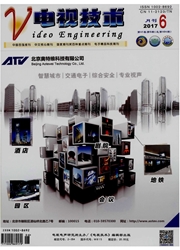

 中文摘要:
中文摘要:
随着卫星遥感技术的不断发展,基于内容的遥感图像检索技术越来越受到关注。目前该方向的研究主要集中在对遥感图像中不同特征的提取和融合方面,这些方法普遍忽略了这样一个事实:对于不同类型的检索目标,特征应该是不同的。另外,小样本问题也是遥感图像检索中一个较为突出的问题。基于以上两方面考虑,本文提出一种基于特征选择和半监督学习的遥感图像检索新方法,该方法主要包括4个方面:1)利用最小描述长度准则自动确定聚类数目;2)结合聚类方法和适当的聚类有效性指标选择最能表示检索目标的特征,在计算聚类有效性指数时,针对遥感图像检索特点对原有的Davies—Bouldin指数进行了改进;3)动态确定最优颜色特征和最优纹理特征之间的权重;4)根据最优颜色特征和最优纹理特征的权重自动确定半监督学习方法,并进行遥感图像的检索。实验结果表明,与相关反馈方法的检索效果相比,该算法在土壤侵蚀区域检索以及其他一般地表覆盖目标检索中均获得了相近的检索效果,但不需要用户多次反馈。
 英文摘要:
英文摘要:
Content-based remote sensing image retrieval has been receiving more attention. Current research on content-based remote sensing image retrieval is mainly about feature extraction and feature fusion. But all these methods have ignored such a fact that retrieval objectives of different types ought to adopt different features. Besides, small size of the training set is also a challenging issue. Considering the abovementional two issues, a new remote sensing image retrieval method, which is based on feature selection and semi-supervised learning, is proposed in this paper. The new method includes four steps: 1 ) Determine the number of clusters automatically by using MDL criterion; 2) According to a clustering validity index, we select the optimal features which can describe the retrieval objectives best, meanwhile make some improvements in the original DB index; 3 ) Dynamically determine the weights of the best color feature and the best texture feature; 4) Automatically select an appropriate semi-supervised learning method and conduct image retrieval. Experiment results show that, in contrast to the retrieval performance of relevance feedback method, the method proposed in this paper obtains similar retrieval performances both in the applications of soil erosion area retrieval and general land cover retrieval in remote sensing image, as well as solving the small sample size problem.
 同期刊论文项目
同期刊论文项目
 同项目期刊论文
同项目期刊论文
 期刊信息
期刊信息
